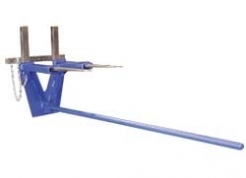
Every material handling operation requires different equipment and tools, depending on the types of material you’re moving around. Handling large items and material often requires a lift truck. Deciding when to invest in a forklift, and which one to buy, is a common challenge faced by businesses. Likewise, once the lift truck is purchased, it’s very important to ensure the working environment is safe for employees. This is usually accomplished by taking time to adopt adequate large equipment procedures.
When using a forklift, proper load handling is extremely important. It not only improves safety and quality control, but if you fail to secure a load properly, you risk damaging or destroying valuable products – and you compromise the safety of your co-workers as well as yourself.
The first step is to always familiarize yourself with the capacity of the lift truck. Checking the information plated on the forklift might take an extra minute, but you might be grateful to know the weight capacity if a problem arises. Securing the load starts when you approach and pick up the load. For example, spreading the lift truck’s forks as wide as possible ensures that the equipment will lift the load with its weight distributed evenly across the forks. (It’s also important to use the appropriate lifting accessory, which could mean attaching a drum grabber or carpet spike.) Drive the forklift into position to lift the load, with the forks through the pallet far enough that you can completely secure the load. The load has to be centered, and must not lead to either side. You can also shift the forks backward, tilting the load so that it leans against the forklift.
Because properly securing the load greatly improves stability when you drive away, tie down loose and uneven ends of the load with tie-down straps. Lift the load and tilt it back again before putting your forklift in gear. Then drive carefully, with the forks about 10 inches or so above ground level; this maintains stability and prevents tipping over.
Here are a few more safety tips about lift truck operation:
Don’t lean around the side of the load if it’s so big that it blocks your view of the path. Instead, drive the forklift in reverse so you can see clearly.
When loading, don’t put anything on your forklift’s overhead guard. This can destabilize the load, and it’s a common cause of forklift accidents.
Don’t try to adjust the load while moving, and never reach through the lift truck’s mast to do so. Instead stop the truck, dismount and do the adjusting – it might take a few more seconds but it could prevent serious injury!
